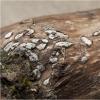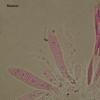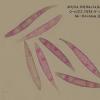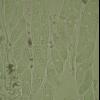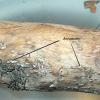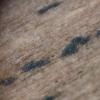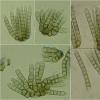
18-12-2025 21:17
Pol DebaenstThe identification took me to Byssonectria deformi

15-12-2025 07:09
 Danny Newman
Danny Newman
indet. Rutstroemiaceae sp. on unk. fallen leavesMc

19-12-2025 10:10
Patrice TANCHAUDBonjour, récolte réalisée en milieu dunaire, a

18-12-2025 17:23
 Bruno Coué
Bruno Coué
Bonjour,je serais heureux d'avoir votre avis sur c

18-12-2025 18:07
Margot en Geert VullingsThese plumes were found on rotten wood.They strong

17-12-2025 18:35
 Michel Hairaud
Michel Hairaud
Bonjour à tous/Hi to everyone I am passing along

15-12-2025 15:48
 Danny Newman
Danny Newman
Melanospora cf. lagenaria on old, rotting, fallen

15-12-2025 15:54
 Johan Boonefaes
Johan Boonefaes
Unknown anamorph found on the ground in coastal sa

15-12-2025 21:11
 Hardware Tony
Hardware Tony
Small clavate hairs, negative croziers and IKI bb
Me gustaria que me ayudarais a identificar este pyrenomycete.
En la imagen macro, se puede ver como sobre la superficie blanquecina aparecen unos puntitos negros. A la derecha, muestro un corte oblicuo de ese ascoma donde se pueden ver los loculos o peritecios redondeados de 100-200um de diámetro.
Supongo que se trata de algun hongo que parasita Propolis versicolor, porque aunque en los ascomas parasitados no veo ascas de P.versicolor, los que tienen el mismo aspecto pero sin los puntitos negros si que son.
Datos microscopicos:
Esporas hialinas, con 2 septos en la madurez.
Tamaño de las ascas de 70-90 x 9-12um.
Parafisis divididas, septadas, anchas (x2.5-5um).
Gracias de antemano.
Un saludo.
Susana
Esta recolectado en Esteribar, Navarra (España), en una zona humeda de regata, a unos 500m de altitud, sobre una rama de planifolio que no se identificar.
Un saludo
Susana

this one looks like a member of Tubeufiaceae, which contains either parasitic and saprobic species.
Best wishes,
björn
Hello!
Nice fungus! The ascus and ascospores looks like Tubeufiaceae, but I feel that the ??Tubeufiaceae tends to live in tropical region. Ascomata are not comparable with typical Tubeufiaceae as well. Is it anamorphic stage in the right bottom of the first photo?
:)
Ying
the anamorph looks like a Cryptocoryneum species.
Best wishes,
Gernot

